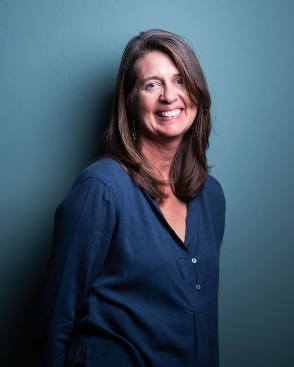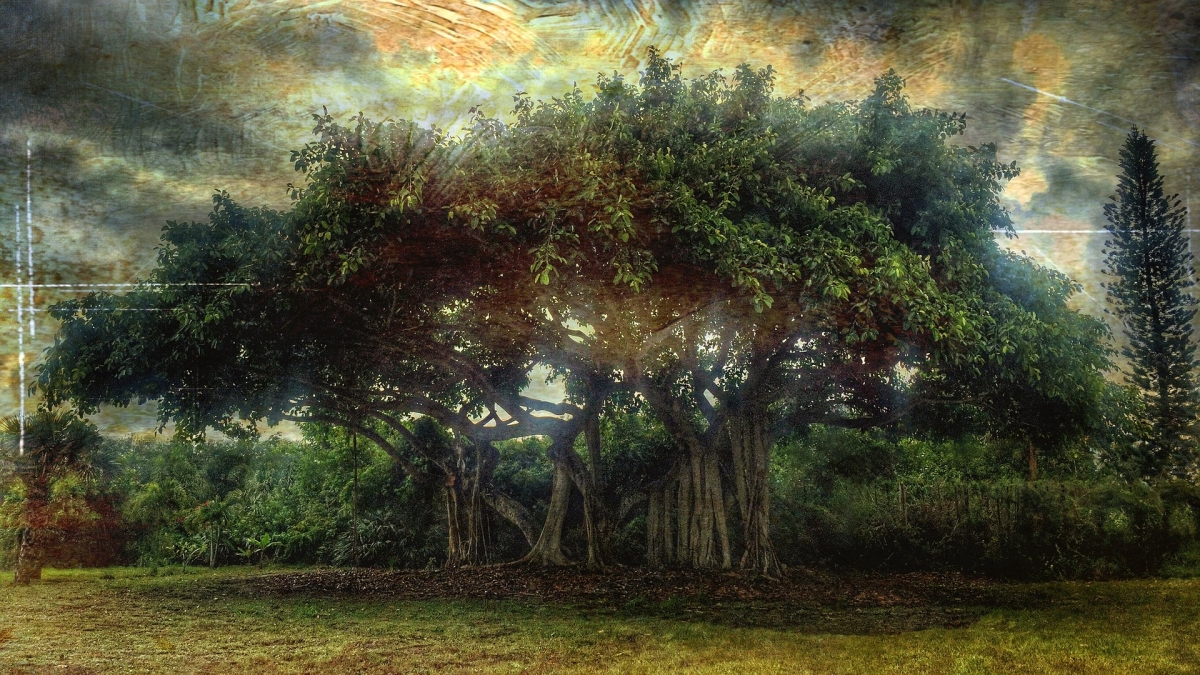It’s no coincidence that the exhibit map for “Telephone,” an ambitious project that enlists creators of all kinds to mimic the classic children’s game by “whispering” a message from one art form to another, resembles the branches of a tree. Nathan Langston, who conceived of the project, now in its second iteration, was inspired by that metaphor when considering what message to begin the game with.
The 2015 iteration of “Telephone” had used “The Breton Fisherman’s Prayer” as its original message. This time around, Langston settled on a passage from the book “Ladders to Heaven: The Secret History of Fig Trees,” by British biologist Mike Shanahan, about the banyan tree, a type of fig tree capable of growing so large as to resemble a forest from afar.
Arizona State University English Professor Sally Ball, who contributed to the project, was surprised to learn from whence it came – each artist participating in the game is only aware of the artwork that directly preceded their own, so the original piece that prompts the rest is a mystery to all but the first few tasked with interpreting it.
From there, the original message could morph from poetry to music to film, and so on, with each interpretive work being “whispered” on to two or three more artists. Halfway through the game, the method is reversed; instead of a few artists receiving one work to interpret, one artist receives a few to synthesize into one, eventually concluding with a single work of art, at which time the original prompt is revealed to all.
To Ball, who did not participate in the 2015 iteration, “The Breton Fisherman’s Prayer” seemed a decidedly more poetic nugget of language to employ as a prompt for such a project than Shanahan’s austere historical account of the first Europeans to have seen a banyan tree.
“It seemed almost like it was designed to provoke drastic interpretive leaps,” Ball said.
The game itself, according to Langston, was resurrected in March 2020, at the onset of the pandemic, in part because of its ability to make drastic leaps in space, “connecting strangers in a uniquely intimate way” at a time when physical closeness wasn’t possible.

ASU Professor of English Sally Ball
If you ask Ball, it was successful in that endeavor. “It very much felt like a kind of rescue from isolation,” she said.
The second iteration is now complete and available to view as a free, interactive digital exhibit on the project website. It includes the work of more than 950 artists from 474 cities in 69 countries.
Ball’s contribution, a poem titled “Red Life,” was inspired by the preceding artwork (referred to, as all preceding artworks in the project are, as “last generation” in the hyperlink that will take you to it in the exhibit), a short film by the German artist Beatriz Crespo.
In “Red Life,” Ball contemplates form, along with what can be contained in a work of art and what might spill out. When you watch the film that she drew from, with its words that run off the page onto a table and crazed glass bowls filled with bits and bobs, a throughline begins to emerge.
The practice of ekphrasis — drawing from a work of visual art to create vivid, verbal descriptions — is one Ball had been exploring on her own for some time. “SO MUCH OF THE WORLD STAYS BEAUTIFUL: HOLD,” is a product of that exploration.
A limited-edition artist’s book, “HOLD” represents Ball’s collaboration with Czech gravuristGravure printing is a style of printmaking or relief printing where an image is incised into the surface of a copper plate. Jan Vicar. In it, words from her poem of the same name — which appears in her third, full-length collection, “Hold Sway,” an examination of climate change — appear next to linocut prints of oil rigs and various flora and fauna.
Ball recently visited Paris to read from the book and discuss the process of making it at an exhibit of Vicar’s after he received an award for his work from the French Academy of Fine Arts (Academie des Beaux-Arts). This fall, the book will be on exhibit at the Harry Wood Gallery at ASU.
“My grandmother was a painter, and I think in my life, she's the person who made art seem sort of real and doable to me, and not locked up in a museum or outside of the lives of everyday people,” Ball said. “I did not turn out to be a painter, but I think that having come to a sense of art from that orientation, I’ve always felt a kinship with other kinds of artists.”
During Ball’s sabbatical in 2015, she spent a month at an artist’s retreat, where she assumed she’d be accompanied by at least a few other writers. As it turned out, she was the only one; everyone else was a visual artist.
“I loved being in their company and I felt so buoyed and like I was learning from them and the way that they approach their work,” she said. “My first book, ‘Annus Mirabilis,’ is about the way scientists seek knowledge and the ambition that scientists have as compared to the ambition that artists have to understand things and to know things and to interpret meaning out of the universe. I guess I'm just sort of a meaning-hungry person.”
Top photo courtesy of Pixabay
More Arts, humanities and education

ASU professor's project helps students learn complex topics
One of Arizona State University’s top professors is using her signature research project to improve how college students learn science, technology, engineering, math and medicine.Micki Chi, who is a…

Award-winning playwright shares her scriptwriting process with ASU students
Actions speak louder than words. That’s why award-winning playwright Y York is workshopping her latest play, "Becoming Awesome," with actors at Arizona State University this week. “I want…

Exceeding great expectations in downtown Mesa
Anyone visiting downtown Mesa over the past couple of years has a lot to rave about: The bevy of restaurants, unique local shops, entertainment venues and inviting spaces that beg for attention from…


